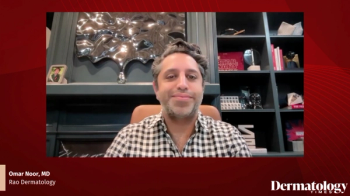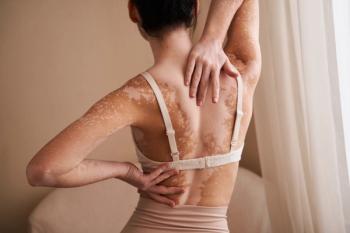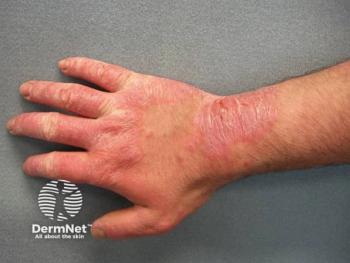
French Survey Reveals Gaps in CHE Severity Assessment
Key Takeaways
- CHEMIN survey reveals variability in CHE management practices among French clinicians, highlighting the absence of national guidelines.
- Consensus exists on hallmark CHE symptoms, but severity assessment and allergen evaluation lack uniformity.
A national Delphi survey reveals critical insights into CHE management in France, highlighting the need for standardized assessment and guidelines.
A recent Delphi survey published in Contact Dermatitis presents new insights into the clinical practices of French health care providers managing chronic hand eczema (CHE), a condition affecting approximately 4.9% of the French population.1 The survey, known as CHEMIN, is the first of its kind in France to systematically evaluate diagnostic and management strategies for CHE using a national consensus approach.2
CHE, recognized as a leading occupational disease due to its impact on productivity and disability, currently lacks standardized national guidelines in France. In this vacuum, clinicians often rely on personal experience or non-uniform criteria for diagnosis and treatment. The CHEMIN survey aimed to identify areas of consensus and discordance among French clinicians and related specialists to inform future practice harmonization.
“Although European guidelines provide a comprehensive overview of these clinical and functional signs, our study presents new insights that could help improve severity diagnosis such as occupational incapacity,” researchers behind the survey wrote. “Besides, given that the severity reported by patients often exceeds the severity assessed by physicians, a standardized method could provide a more accurate assessment of CHE severity, potentially improving therapeutic decision-making. Standardizing severity assessment, QoL evaluation, and key interview topics would improve practice, communication, and guideline alignment, highlighting the urgency for better CHE treatment.”
Methods and Materials
Conducted between July 2023 and January 2024, the survey followed a 2-round Delphi methodology and included responses from 135 clinicians in the first round and 120 in the second. The majority of participants were dermatologists, with smaller numbers of occupational physicians, allergists, and dual-specialty practitioners. On average, respondents reported managing 6 CHE patients per month.
Clinical Diagnosis
The study found a high level of agreement (>66.6% consensus threshold) on hallmark CHE symptoms such as pruritus (itching), vesicles, lichenification, and fissures or bleeding. These align with existing European guidelines and reflect a core diagnostic pattern used in practice. However, other signs—including hyperkeratosis, scaling, edema, and pain—did not reach consensus as defining features, though they are often present in patients.
Interestingly, the findings echo previous research suggesting that combining multiple clinical signs with pruritus is critical for accurate CHE diagnosis.3
Severity Assessment
A major limitation identified was the lack of agreement on how to assess CHE severity. While some clinicians used the Dermatology Life Quality Index (DLQI), most did not employ formal tools, instead relying on observed clinical signs. Notably, a subset of respondents considered work incapacity and the need for medical leave as markers of severity, highlighting the disease’s functional burden.
This variability may contribute to underestimation of disease impact. Previous research shows a consistent gap between physician-rated and patient-perceived severity, indicating a need for standardized tools that integrate both clinical and quality-of-life (QoL) measures.
Allergen Evaluation and Patient Communication
The survey also found that discussions around QoL and food allergies—important elements of holistic care—were not consistently addressed in patient consultations. Moreover, indications for allergological assessment varied widely, revealing another gap in uniform management.
Call for Guidelines
The authors emphasize that these discrepancies—particularly in severity assessment and patient communication—highlight the urgency for national CHE management guidelines in France. Standardization could improve diagnostic accuracy, ensure consistent treatment decisions, and enhance patient outcomes.
While the Delphi approach allowed for broad input and consensus-building, the authors acknowledge limitations, including underrepresentation of allergists and potential bias from clinician self-reporting.
Conclusion
The CHEMIN survey sheds light on current real-world practices in France and identifies critical areas for improvement in CHE management. As CHE remains a prevalent and disabling condition, harmonizing clinical approaches through national guidance could significantly improve patient care and reduce disease burden.
References
- Apfelbacher C, Bewley A, Molin S, et al. Prevalence of chronic hand eczema in adults: a cross-sectional survey of over 60 000 respondents from the general population of Canada, France, Germany, Italy, Spain and the UK. Br J Dermatol. 2025;192(6):1047-1054. doi:10.1093/bjd/ljaf020
- Bernier C, Crépy MN, Halioua B, et al. Assessment of practices in chronic hand eczema management from CHEMIN, a national delphi survey. Contact Dermatitis. Published online July 11, 2025. doi:10.1111/cod.70001
- Yüksel YT, Nørreslet LB, Olesen CM, Agner T. Assessment of hand eczema severity: What's new?.Contact Dermatitis. 2022;87(6):556-557. doi:10.1111/cod.14214
Newsletter
Like what you’re reading? Subscribe to Dermatology Times for weekly updates on therapies, innovations, and real-world practice tips.



















